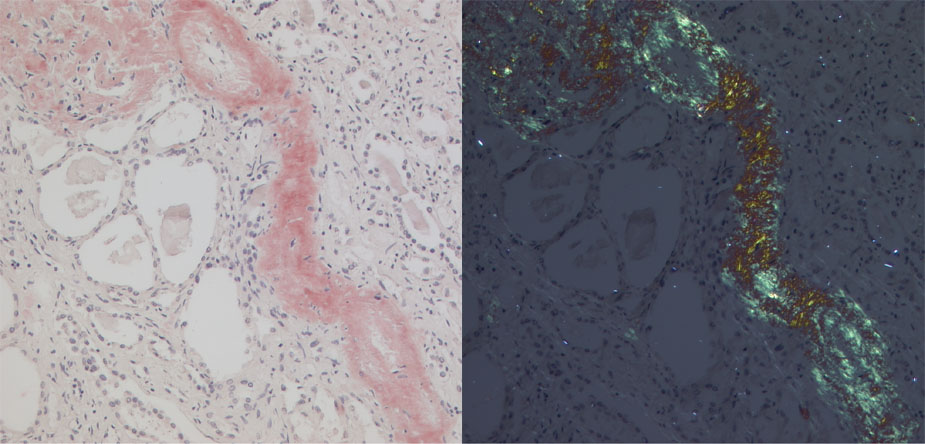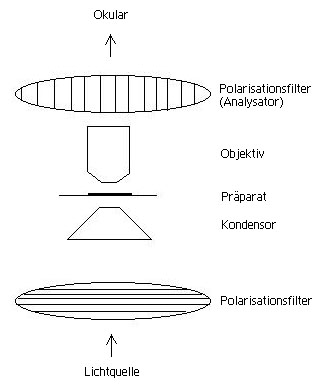weitere Informationen auf further information (German) on HiPaKu
Frau, 70 J., nephrotisches Syndrom, ausgebrannte chronische Polyarthritis.
Autopsiepräparat.
- Glomerula enthalten rotgefärbtes Amyloid (Amyloid im Glomerulum) in den Kapillarschlingen, welches sich im Bereich
der Basalmembranen unregelmässig ablagert sowie im Mesangium
- Glomeruläre Struktur im Endstadium weitgehend zerstört
- Kleine Arterien und Arteriolen zeigen ebenfalls homogene Amyloideinlagerungen (Amyloid in Arterie und Amyloid in Arteriole)
Immunhistochemie:
Es handelt sich bei der Nierenamyloidose meist um eine AL-Amyloidose
(90%).
Ätiologie:
Am häufigsten liegen Paraproteinämien (z.B. Plasmozytome)
vor. Daneben sind aber chronische Infekte nicht so selten als Ursache
zu finden (AA-Amyloidose, Serum-amyloid-associated protein).
Die Kongorotbindung lässt sich durch die mikroskopische Durchlichtaufnahme
und die grüne Doppelbrechung in polarisiertem Licht nachweisen:

Aufnahme mit polarisiertem
Licht:
70-year-old female with nephrotic syndrome, burnt out chronic polyarthritis, autopsy specimen
- The glomeruli contain a red-staining amyloid (Amyloid im Glomerulum) in the capillary slings with irregular deposits in the area of the basal membrane as well as the mesangium.
- In final stages, the glomerular structure is destroyed.
- The small arteries and arterioles contain homogenous amyloid deposits (Amyloid in Arterie and Amyloid in Arteriole).
Immunohistochemistry: t In 90% of cases, amyloidosis in the kidney is usually of the AL-type.
Etiology: Most commonly paraproteinemia (e.g plasmacytoma). Chronic infection may also cause amyloidosis (AA-amyloidosis, serum-amyloid associated protein)
The congo red staining can be confirmed by green in polarized light.

Settings for polarized illumination:
